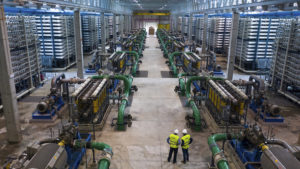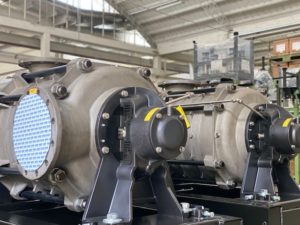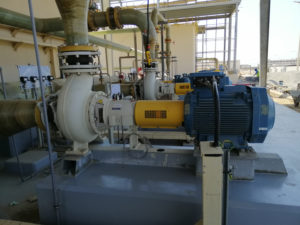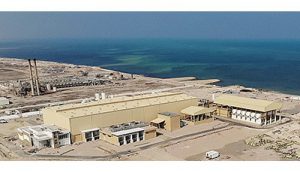Katrina Demonstrates the Growing Demand for Reverse Osmosis Units
When gulf coast residents were left without a drinking water source in the aftermath of Katrina, Tularosa Basin National Desalination Research Facility sent its portable reverse osmosis (RO) membrane purification system to Biloxi Mississippi to provide drinking water to 40,000 local inhabitants.
The unit can produce 200,000 gallons per day of drinkable water from contaminated river water or from seawater.
Ironically the big demand for these membrane purification systems is where water is scarce. But, in this case, too much water in the wrong places created the need.
The Defense Department is steadily increasing its RO capability to supply troops with drinkable water. There are also major projects in the continental U.S. to build RO plants for emergency situations. The US House of Representatives has approved legislation to help find a site for a desalination plant to produce drinking water for the San Francisco Bay area.
The desalination plant could produce 60 to 80 million gallons of drinking water a day. That's enough water to supply about 500,000 to 600,000 people, but it would likely be used as a backup supply during emergencies.
The sales of membrane systems worldwide will rise from $7 billion this year to $10 billion in 2009. These forecasts are reflected in the most recent updates of RO/UF/MF World Markets, an online forecasting service provided by the McIlvaine Company of Northfield, IL.
The lack of fresh drinking water together with the high incomes in the Middle East has resulted in a boom in the construction of new membrane desalination plants. Saudi Arabia is the third largest purchaser of RO membranes and equipment. The U.S. and Japan are first and second.
Asia suffers from a lack of water resources as well as contamination of the water which is available. Unreliable municipal water supplies have caused the middle and upper classes to purchase home RO systems despite the $1,000 selling price of systems offered in upscale department stores in major cities such as Shanghai. By 2009, the RO equipment and membrane market in Asia will exceed $2 billion/yr.
One of the highest growth sectors for cross-flow membrane systems is where filtration and biological treatment are combined. Membrane bioreactors provide sewage treatment in a compact system. There is double-digit growth in the use of these systems for small communities, residential developments, and resorts. Growth in the use of these systems to treat waste from food processing plants is growing at 20 percent per year.
Source: The McIlvaine Company





